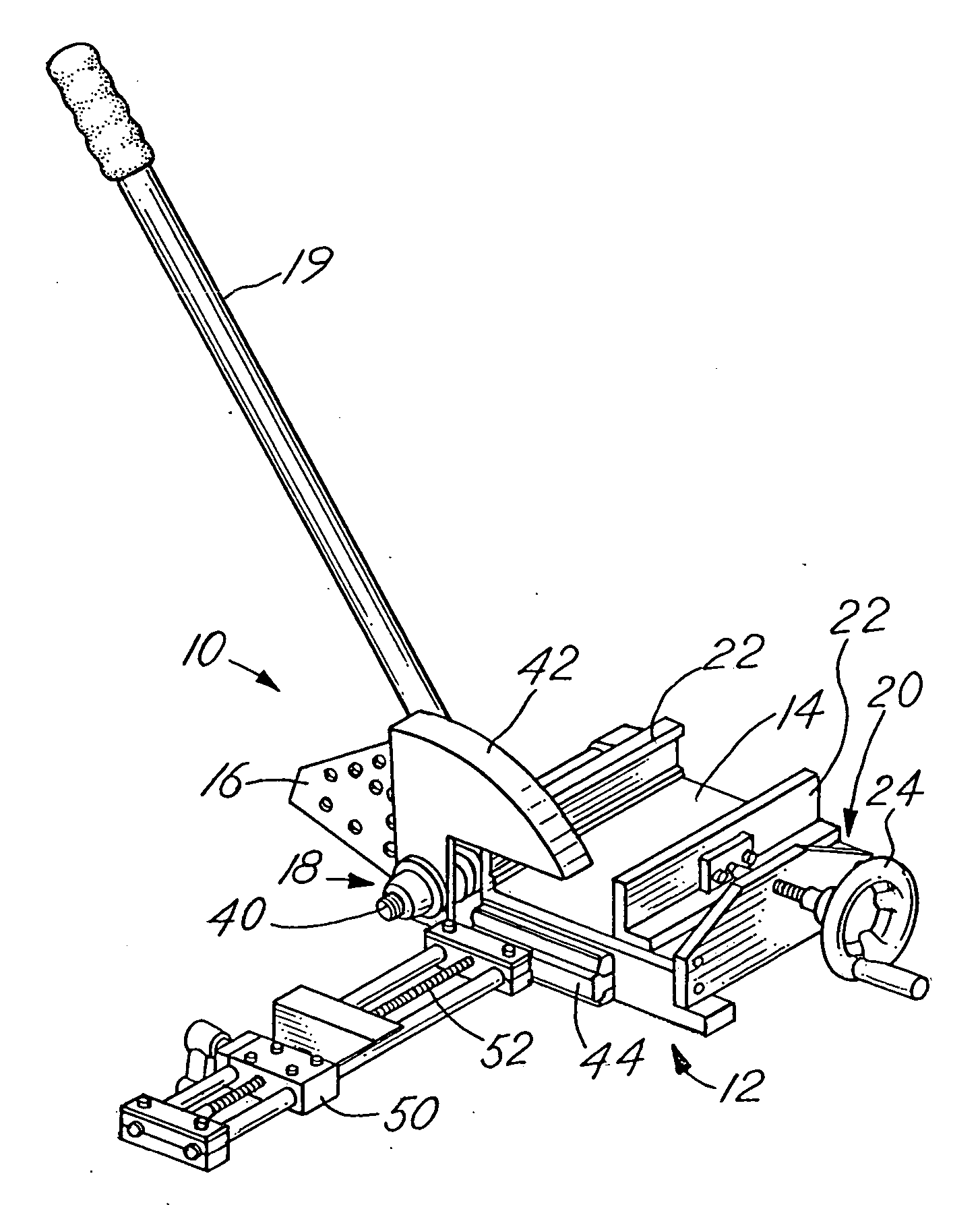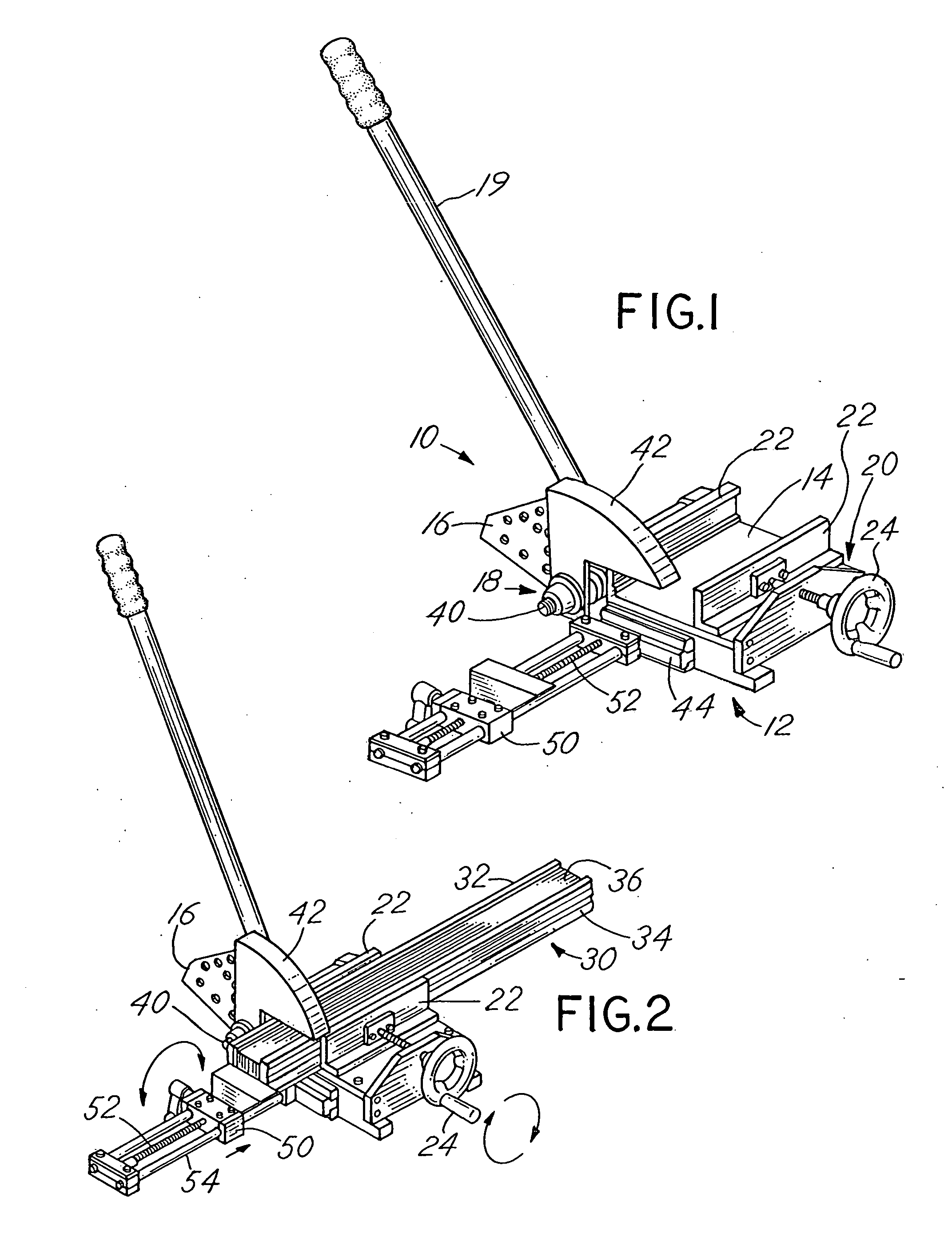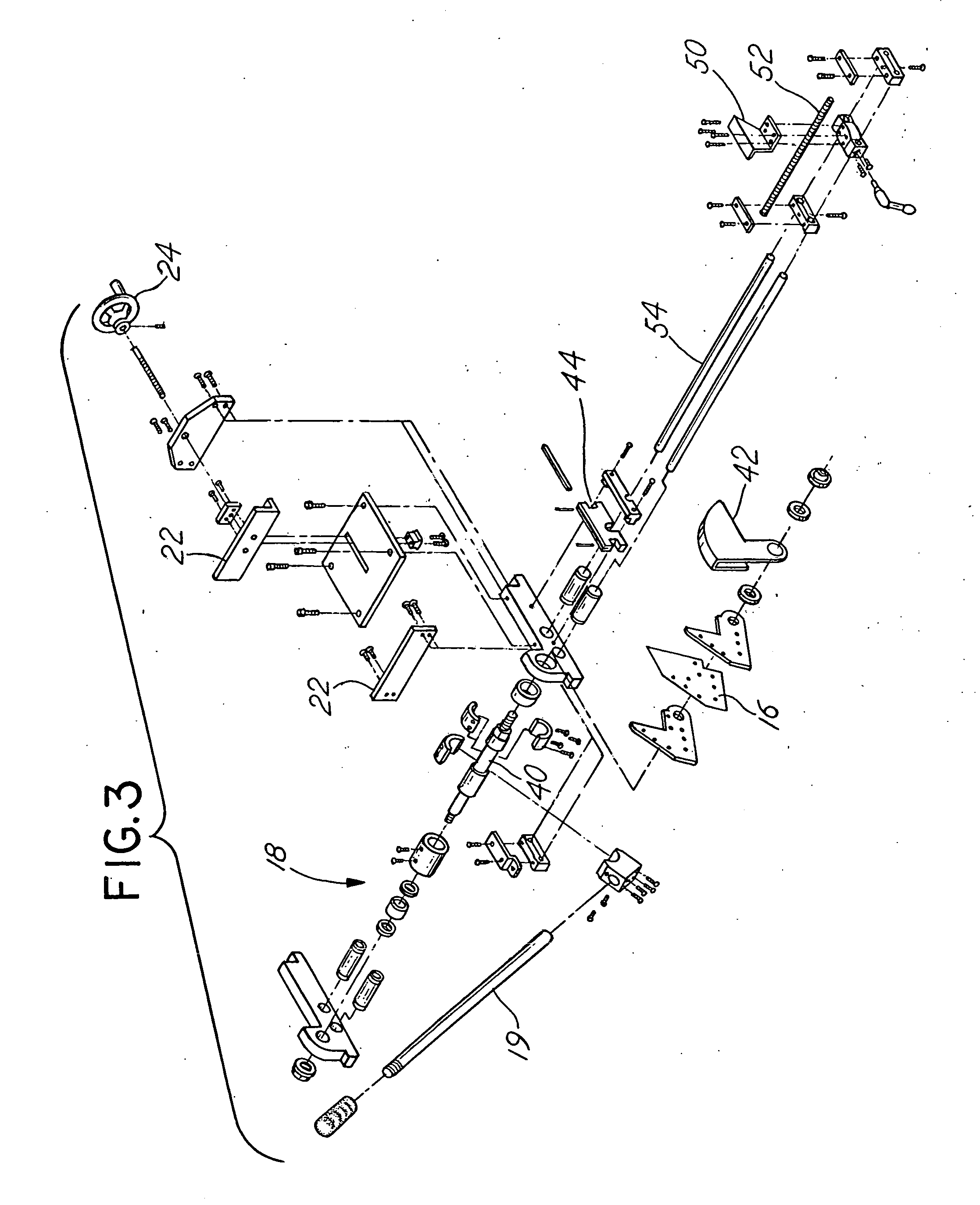Window shade cutting apparatus
- Summary
- Abstract
- Description
- Claims
- Application Information
AI Technical Summary
Benefits of technology
Problems solved by technology
Method used
Image
Examples
Embodiment Construction
[0038] The invention disclosed herein is susceptible to embodiment in many different forms. Shown in the drawings and described in detail hereinbelow is a preferred embodiment of the present invention. The present disclosure, however, is an exemplification of the principles and features of the invention, but does not limit the invention to the illustrated embodiments.
[0039] Referring to FIGS. 1 and 2, an embodiment of a window shade cutting apparatus 10 according to the present invention is shown. The apparatus 10 includes a body 12 comprising a platform 14 for supporting a window shade 30. Although shown as a planar member extending the width of the window shade 30, it should be understood that platform 14 can also take the form of vertical supports or other configurations suitable for supporting a window shade 30. The apparatus also includes blade 16 and an actuating mechanism 18 that is operated by lever arm 19. The apparatus 10 further comprises a clamp mechanism 20 including o...
PUM
| Property | Measurement | Unit |
|---|---|---|
| Pressure | aaaaa | aaaaa |
Abstract
Description
Claims
Application Information
 Login to View More
Login to View More - R&D
- Intellectual Property
- Life Sciences
- Materials
- Tech Scout
- Unparalleled Data Quality
- Higher Quality Content
- 60% Fewer Hallucinations
Browse by: Latest US Patents, China's latest patents, Technical Efficacy Thesaurus, Application Domain, Technology Topic, Popular Technical Reports.
© 2025 PatSnap. All rights reserved.Legal|Privacy policy|Modern Slavery Act Transparency Statement|Sitemap|About US| Contact US: help@patsnap.com



